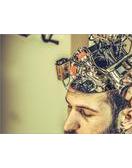Western medicine is innovative, but if you search through PubMed, you find very few drug trials for degenerative cerebellar ataxia. There is no known cure for ataxia, so our best hope still lies in finding a therapy to ease the symptoms. With all the modern innovations available what if one possible answer lies in an ancient system of holistic healing? Ayurvedic medicine deserves a look.
“Ayurveda” comes from the Sanskrit words Ayur (life) and Veda ( knowledge) and is the oldest (5,000-year-old) recorded system of medicine in history. It combines the concept of whole health; lifestyle, exercise, diet along with medicinal herb compounds, some which predate written history. Many traditional therapies are now being studied in a clinical setting using western methods of research, double-blind trials, and research review to prove or disprove their efficacy.
The most promising trial we’ve previously highlighted is Degenerative Cerebellar Ataxia After Ayurvedic Therapy. In 2009 a joint study in India was conducted by the Department of Neurology, National Institute of Mental Health and Neurosciences, Advanced Ayurvedic Research Unit, National Institute of Mental Health, and the National Department of Neurosciences, Psychiatric and Neurological Rehabilitation. In this study, they sought to discover if traditional Ayurvedic medicine could have a positive effect on balance issues caused by cerebellar ataxia.
The treatment included therapeutic oil treatment and full body massage with herb-infused sesame oil, 15-minute steam box sessions and a thirty-day herbal dosing regimen. We’d like to highlight the herbal therapy the study followed.
The subjects were prescribed two Dhanvantaram capsules 101 soft gel three times a day, One Ashwagandha 500mg three times a day and 15 ml Maharasnadi kashayam three times a day. While before treatment all the patients had one or more abnormal balance indices, following treatment, 40% of patients showed normal balance indices.
Dhanvantaram 101 Soft Gel Capsules
Dhanvantaram is Dhanwantharam Thailam oil in a soft gel capsule for oral use. Dhanwantharam Thailam is widely used both as an oral application and topically for full body massage. The oil is processed by the traditional method 101 times, so herbal potency is well infused.
The ingredients: Sesame oil infused with Sida Cordifolia Root, Cow’s Milk, Barley, Kola, Kulthi,Indian Bael, AgnimanthaOroxylum Indicum (flower), Patala, Beech Wood, Indian Nightshade, Yellow Fruit Nightshade, Shalaparni,Prishnaparni, Gokshura, Meda, Mahameda, Deodar Cedar, Manjistha, Kakoli, White Lily, Red Sandalwood, Sariva, Indian Costus Root, Indian Valerian, Jeevaka, Rishabhaka, Rock Salt, Black Creeper, Shaileyam, Sweet Flag, Aquilaria, Punarnava, Ashwagandha, Indian Asparagus, Ksheerashukla, Liquorice Root, Haritaki, Bibhitaki, Emblica Officinalis, Dill, Wild Bean, Teramnus Labialis, Cardamom, Cinnamon, and Indian Bay Leaf.
The bioavailability of the infused herbs has been shown to be excellent. Dhanwantharam has demonstrated positive results for the treatment of Neuritis, Facial Palsy, Neuralgia, Neck or Back pain, Fibromyalgia, Osteoarthritis, Rheumatoid Arthritis, Cervical Spondylosis, Disc Degeneration and Slipped Disc pain.
It has anti-inflammatory and strengthening properties shown to reduce inflammation of nerves, joints, muscles, ligaments, and tendons. It is beneficial to the nervous system, slows muscle wasting and is neuroprotective.
Ashwagandha 500mg
Ashwagandha is commonly known as Indian Ginseng. It helps improve memory, executive function, slows neurodegeneration and delays dementia. Also, Ashwagandha traditionally is prescribed to help with anxiety, depression, stress, irritability, and insomnia. It is used in all inflammatory disorders and has shown positive benefits in combating chronic headache, vertigo, and nystagmus. It’s important when buying Ashwagandha to purchase a product made from full spectrum whole root Indian Ginseng.
Maharasnadi Kashayam Liquid 15ml
The Maharasnadi Kashayam in the study was administered in 15ml doses, mixed with water, and taken three times a day before eating. The decoction works on both the nervous and musculoskeletal systems controlling inflammation and reducing nerve irritation. It has proven analgesic, anti-spasmodic, and neuroprotective properties. As a bonus, it also reduces stomach gas or flatulence.
The ingredients: Rasna, Sida Cordifolia, Fagonia Arabica, Castor, Devdaru, Spiked Ginger Lily rhizome, Sweet Flag, Malabar Nut, Dried Ginger, Haritaki, Chavya, Nut Grass, Punarnava, Giloy, Vidhara, Fennel Seed, Gokshura, Indian Ginseng, Ativisha, Amaltas, Indian asparagus, Sahachara, Long Pepper, Coriander, Kantakari, and Indian Nightshade.
Maharasnadi Kashayam is prescribed for the treatment of Rheumatoid Arthritis, Facial Paralysis, Hemiplegia, Sciatica, Muscle Spasm, Low Backache, Bursitis, Fibromyalgia, Gout and Frozen Shoulder.
Why Does It Work?
From a non-medical standpoint, the therapeutic properties of the three parts of treatment have a common thread, neuroprotective, anti-inflammatory, and musculoskeletal health. Essential areas people fighting cerebellar ataxia can benefit from even if only temporarily. We’ve not found any follow-up on how long the improvement lasted, but given the nature of the treatment (massage, steam and natural medication) the hope would be the cycle could be repeated as necessary.
Now, before you decide to give Ayurvedic medicine a try, we remind you to consult your physician to make sure there are no contradictions with any drug or treatment you are currently taking. It would best to find a trained Holistic or Ayurvedic medicine practitioner in your area you can consult. We’ve noticed many Ayurvedic practitioners will consult long distance. The important thing is to be smart and safe.
+
*Note: We often write about therapies Gary has tried himself. This therapy is very intriguing, and he may try it at some point in the future. He is currently on so many medications presently the thought of adding more right now is enough to add this to the one day list. If you chose to try this, we want to hear from you.
Thanks,
Gary and Rori

